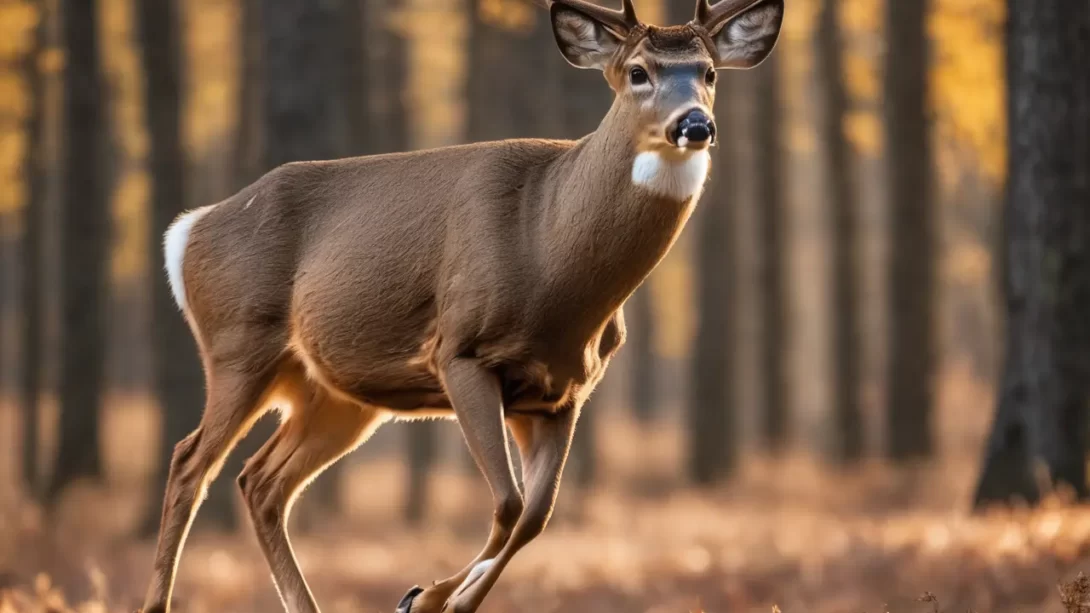The whitetail deer, a prevalent species in North America, is renowned for its agility and grace, particularly evident in its ability to jump. These deer are not just admired for their beauty but also for their remarkable athletic abilities. Understanding how high whitetail deer can jump is not only fascinating but also crucial for wildlife management, fencing designs, and reducing vehicle-deer collisions. This article aims to shed light on the impressive jumping capabilities of whitetail deer and the factors that influence them.
Whitetail Deer
Whitetail deer, scientifically known as Odocoileus virginianus, are medium-sized deer native to North America. Characterized by their reddish-brown coat in the summer which turns to grayish-brown in winter, they are most recognizable by the white underside of their tail. Jumping is a critical skill for these deer, used to evade predators, navigate their terrain, and search for food. Their natural agility and athleticism allow them to effortlessly clear obstacles, a trait essential for their survival in the wild.
The Jumping Capability of Whitetail Deer
Whitetail deer are capable of jumping impressive heights. On average, a healthy adult deer can jump about 8 feet high. However, there have been instances where whitetail deer have cleared barriers of 10 to 12 feet, especially when startled or chased. These heights are significant considering the average height of a whitetail deer, which ranges from 3 to 3.5 feet at the shoulder.
Recorded instances of extraordinary jumps by whitetail deer often involve scenarios where the deer are under stress or in situations where escaping a predator or a perceived threat is necessary. In comparison to other deer species, whitetails are among the more agile jumpers, demonstrating both high jumps and long-distance leaps.
Factors Influencing Jump Height
Several factors contribute to the variation in jump heights among whitetail deer:
- Age and Health: Younger and healthier deer typically have more strength and stamina, allowing them to jump higher. Older deer or those with injuries or health issues may not jump as high.
- Environment and Obstacles: The presence of predators or human activity can trigger a flight response, leading to higher jumps. Additionally, the type of terrain and the presence of obstacles like fences or roads can influence how high deer need to jump.
- Seasonal Changes: During different seasons, deer may have varying levels of energy and fat reserves, affecting their agility. For instance, in winter, heavier body weight might reduce their ability to jump high.
- Motivation: A deer’s motivation, such as escaping a predator or reaching a food source, can significantly impact the height it can achieve in a jump.
Implications of Deer Jumping Ability
The remarkable jumping ability of whitetail deer has several implications:
- Fencing and Property Protection: For farmers and property owners, understanding the heights that deer can jump is crucial for designing effective fences and barriers to protect crops and gardens.
- Wildlife Management: Wildlife conservationists and managers use this knowledge to create habitats that can accommodate the natural behaviors of deer, including their need to roam and jump.
- Road Safety: In areas with high deer populations, awareness of their jumping behavior is important for traffic and road safety. Highways and roads may require specific designs, like wildlife overpasses or taller barriers, to prevent accidents involving deer.
Conclusion
The whitetail deer’s ability to jump high is not only a testament to its agility and strength but also an important consideration in various human-deer interactions. Recognizing that these deer can easily clear obstacles of 8 feet and sometimes even more under stress or motivation is crucial for effective property management, wildlife conservation, and public safety.
For those in rural or deer-populous areas, designing fences and barriers should take into account the deer’s jumping capability to protect gardens, crops, and property effectively. Wildlife management strategies need to consider the deer’s natural behavior, ensuring that their habitats are preserved and that human-deer conflicts are minimized.
Moreover, understanding this aspect of deer behavior is vital for road safety. In regions where deer are common, drivers should be aware of the potential for deer to appear suddenly and leap high, especially near forested areas or marked deer crossings.
In conclusion, the whitetail deer’s remarkable ability to jump high is an adaptive trait that ensures their survival in the wild. For humans living in close proximity to these animals, a deeper understanding and respect for their capabilities can lead to better coexistence strategies, ensuring the safety and well-being of both deer and people. Whether it’s through mindful fencing, habitat conservation, or cautious driving, acknowledging and accommodating the natural athleticism of whitetail deer is a step towards harmonious living with these graceful creatures.



